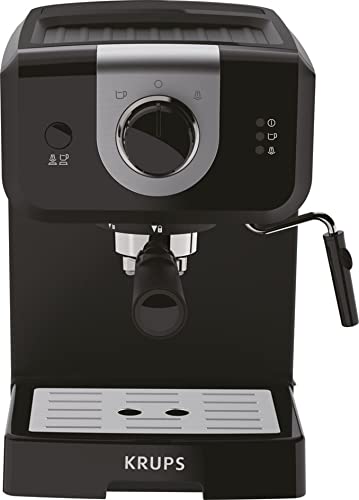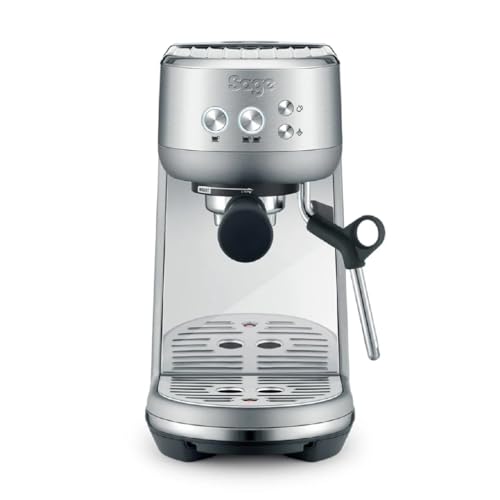Are Stainless Steel Espresso Machines The Best There Ever Was?
페이지 정보

본문
The Art of Italian Espresso Machines: A Brewed Tradition
Italian espresso machines are not just home appliances; they are an integral part of Italy's rich coffee culture, representing a blend of artistry, engineering, and style. Coffee connoisseurs around the globe acknowledge the importance of high-quality espresso, a staple of Italian life and cuisine. This article explores the history, mechanics, types, and factors to consider when buying an Italian espresso machine, reflecting the depth of this cherished beverage and its developing approaches.
History of Espresso Machines
The espresso machine's development dates back to the early 20th century in Italy, where coffee was not simply a beverage but an essential social routine. The preliminary attempts to brew espresso begun with easy, stove-top models, gradually developing into intricate machines that could replicate the ideal brew.

- 1901-- The First Espresso Machine: The very first steam-powered espresso machine, called the "Ideale," was developed by Luigi Bezzera. This equipment marked a turning point in espresso brewing.
- 1938-- The Lever Machine: The introduction of the lever machine made it simpler to manage the pressure utilized in espresso extraction, improving flavor consistency.
- 1947-- The Automatic Machine: Reaching more consumers, Gaggia launched the first automatic espresso machine, more promoting espresso bars.
- 2007-- The Digital Age: Technological developments caused the birth of fully programmable machines, allowing users to personalize their brewing settings to accomplish a customized coffee experience.
Secret Features of Italian Espresso Machines
Italian espresso machines embody accuracy, craftsmanship, and development. Here are some key elements that highlight their significance:
| Feature | Description |
|---|---|
| Boiler Type | Identifies how heat is created and kept. Typical types include single boiler, dual boiler, and heat exchanger. |
| Group Heads | Where the coffee is brewed; commercial machines often have numerous group heads for performance. |
| Pressure Control | Vital for achieving the ideal espresso; most machines run at 9 bars of pressure. |
| Frothing Capabilities | The steam wand permits for milk frothing, necessary for beverages like cappuccino and latte. |
| Construct Quality | The products used (stainless steel, brass, and so on) influence toughness and heat retention. |
Types of Italian Espresso Machines
Selecting the ideal machine hinges on user preferences, budget, and intended use. Below are the primary types of Italian espresso machines:
Manual Espresso Machines
- Pros: Offer complete control over the brewing procedure, enabling for a personalized touch.
- Cons: Require ability and practice, can be labor-intensive.
Semi-Automatic Machines
- Pros: Provide a balance between automated and manual processes; users manage water circulation.
- Cons: Can have a steeper knowing curve than completely automatic machines.
Fully Automatic Machines
- Pros: Simplify the brewing procedure with push-button operations; perfect for newbies.
- Cons: May sacrifice a few of the subtleties of manual developing.
Super-Automatic Machines
- Pros: Grind, tamp, brew, and froth automatically; practical for hectic lifestyles.
- Cons: Less control over the developing variables, potential for a less authentic espresso experience.
Buying Guide: Factors to Consider
Picking the ideal Italian espresso machine can be complicated, but considering the following factors can simplify the decision-making process:
- Budget: Italian espresso machines range from affordable to high-end models, so set a budget upfront.
- Use Frequency: Evaluate how frequently you will use the machine; day-to-day users might desire a more long lasting choice.
- Space: Measure your cooking area or counter space; some machines can be large and need sufficient clearance.
- Maintenance: Consider ease of cleansing; machines with detachable parts or integrated cleansing functions might minimize upkeep.
- User Skill Level: Beginners may prefer completely or semi-automatic machines, while experienced baristas can manage manual machines.
- Brand name Reputation: Research brand names known for quality, such as Breville, Gaggia, and La Marzocco.
Popular Italian Espresso Machine Brands
Italian workmanship is renowned for producing some of the very best discount espresso machines (published on Gilesfraser) machines worldwide. Here are top brands worth considering:
- Gaggia: Known for its home espresso machines and cost.
- La Marzocco: A superior brand name understood for its commercial-grade machines and innovative innovation.
- Rancilio: Renowned for its durable construct and professional-quality machines appropriate for home and commercial use.
- Sage/Breville: Offers advanced features and easy to use designs, ideal for both amateurs and enthusiasts.
Frequently asked questions
What is the difference between espresso and routine coffee?
Espresso is a concentrated coffee brewed by requiring hot water through finely-ground coffee under pressure. It has a thicker consistency, richer taste, and greater caffeine concentration than routine coffee.
Can I make milk-based drinks with an espresso machine?
Yes, numerous Italian espresso machines come with a steam wand to froth milk for beverages like cappuccinos, lattes, and macchiatos.
How often should I clean my espresso machine?
Routine maintenance is important. Usually, a thorough cleansing is suggested every few weeks, while descaling must be done every 1 to 3 months, depending upon water solidity.
What is the perfect pressure for developing espresso?
The ideal pressure for brewing espresso is around 9 bars. This pressure guarantees the optimal extraction of flavors from the coffee grounds.

Are more expensive machines worth the financial investment?
Higher-end machines typically utilize much better materials and innovation, offering enhanced toughness and more consistent results. For serious coffee fans, purchasing a great machine can elevate the espresso experience considerably.
Italian espresso machines are a lot more than mere brewing devices; they are a celebration of a cultural tradition that has affected coffee usage worldwide. With various designs offered to fit any user's requirements-- varying from novices to seasoned baristas-- there is an Italian espresso machine completely suited for everybody. As you start your espresso journey, understanding the history, mechanics, and options will enhance your experience and gratitude for this time-honored beverage. Whether you seek to recreate a café ambiance at home or improve your developing technique, these machines are capable of providing extraordinary cups of espresso adorned with the rich history of Italian coffee culture.
- 이전글Pokrok v CNC Komponentách: Nové Technologie a Inovace pro Moderní Průmysl 25.08.04
- 다음글Center for Digital Privacy: Pioneering the Future of Data Protection and Personal Security 25.08.04
댓글목록
등록된 댓글이 없습니다.
